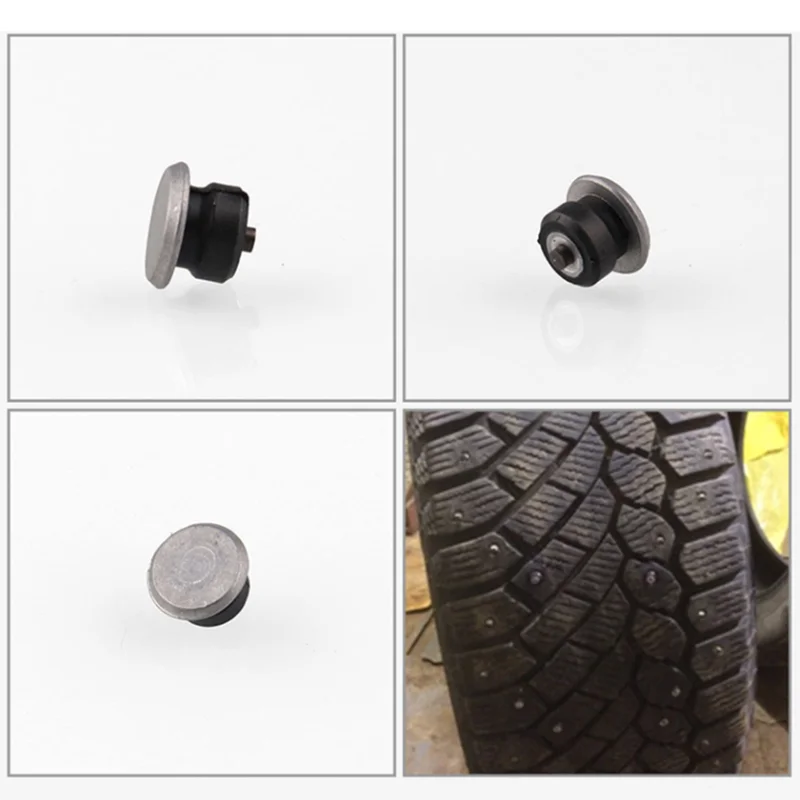Choosing the ideal tire-setup in your ATV for the winter season is not always easy. Neither chains nor studs are the perfect solutions for all winter conditions. I’ve taken a closer look at the pros and cons of both so you better can decide what suits you the best.
So who’s the overall winner in the “ATV chains vs. studs” showdown? Chains are generally better for all-purpose low-speed use on ice and snow, such as plowing and hauling firewood. Studs are better for high-speed ice racing and trail riding. Studs add minimal traction in the snow, where chains work well in moderate depths.
Let’s have a closer look at the different parameters you should consider when deciding which is better for you. For some, it’s more important not to scratch the driveway, while for others, it’s the off-road performance that matters the most. That’s why I cannot decide for you. But I can help you make an educated decision by shining a light on what to expect from each of the two competitors.
Chains do cost more than a bag of studs. A good set is about 150-250 dollars, while you can get studs for 50-100 dollars.
But if you don’t want to leave the studs installed all year round and do not want to spend a lot of time removing and replacing them between the seasons, you may need to invest in one extra set of rims and tires to accommodate the studs.
On the other hand, the chains also usually come with the cost of a set of wheel spacers that will set you back about 100-200 dollars more.
Winner: Studs (if you leave them in all year round)
If you want to avoid scratches in your driveway at any cost, neither chains nor studs are the ideal choices for you. None of them will do any real damage when you roll freely over the surface.
But as soon as we hook up a snowplow, and take into consideration that the surface may not be completely level, the risk of spinning tires increases.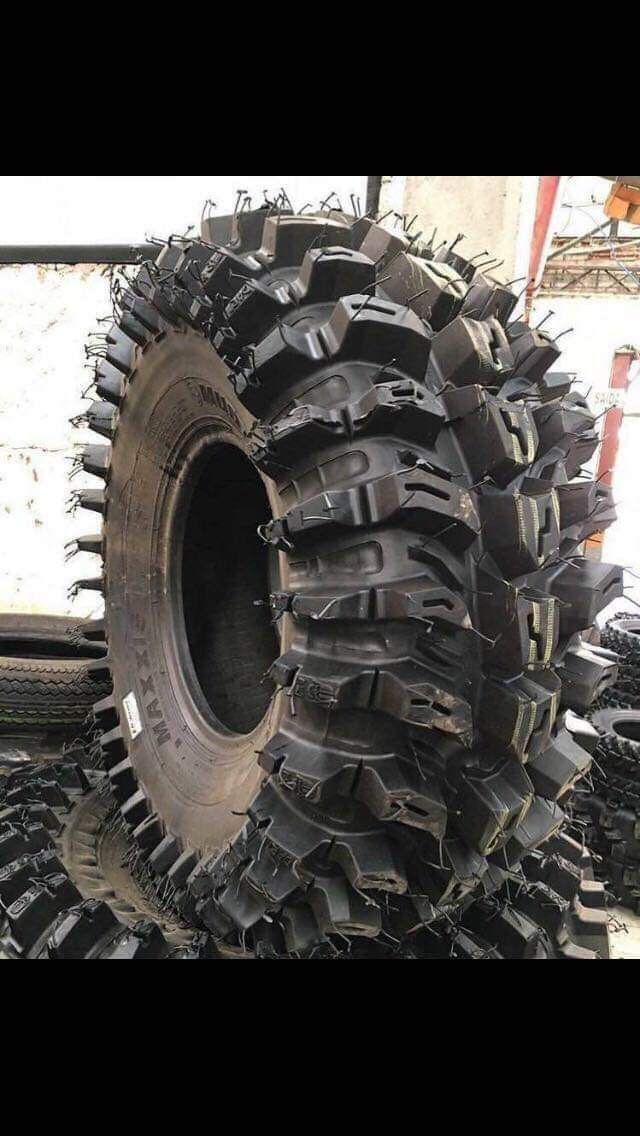 And this is where scratches occur.
And this is where scratches occur.
If you are careful not to spin your tires, you should be able to get through the winter without making too much damage to your asphalt or concrete driveway. But you can’t avoid scratches altogether.
Chains will make deeper scratches simply because they are beefier.
Simultaneously, studded car tires are getting banned worldwide, mostly due to the unwanted dust they create in city centers. When the number of cars passing through is high enough, even the small studs on studded car tires will wear down the road.
Winner: Studs
The chains do offer excellent traction on ice, no doubt about it. ATV does, however, have the disadvantage of being relatively lightweight. Because of this, the chains won’t penetrate the ice as deep as needed for optimal grip.
To counter this, you can get V-bar style chains, or even better: diamond-shaped chains with some beefy studs.
The diamond shape has the additional benefit of reducing the chain’s risk of falling in between the tire lugs, where it won’t do much good.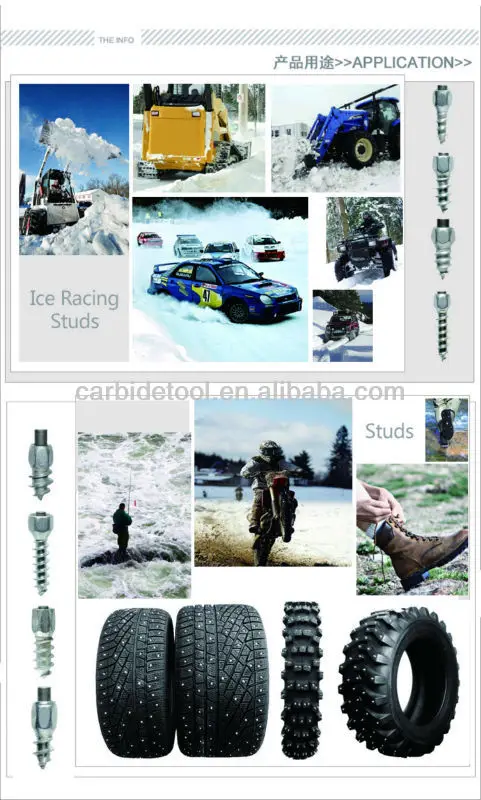
A chain made out of square steel will also give a better grip than one made of round steel.
These diamond-shaped chains made out of square metal work great on my Sportsman.Studs, on the other hand, are purposely made to have an excellent grip on ice. To be more specific, they were initially created for and are still used mostly in ice racing. In ice racing, you are looking for the best combination of high speed and excellent grip.
With the right setup, you can achieve a grip so good that you almost forget you are riding on ice and not on asphalt.
Beefy studs give you excellent grip on ice.How much traction you get can be adjusted by how many and what length of studs you are using. The screw-in style studs are slimmer than the studs you find on chains so that they will penetrate the ice better.
With the ability to regulate how many studs you install, you can also test and find the number of studs that give you the best grip according to your bike’s weight. More is not always better because the more studs you add, the less they will sink into the ice.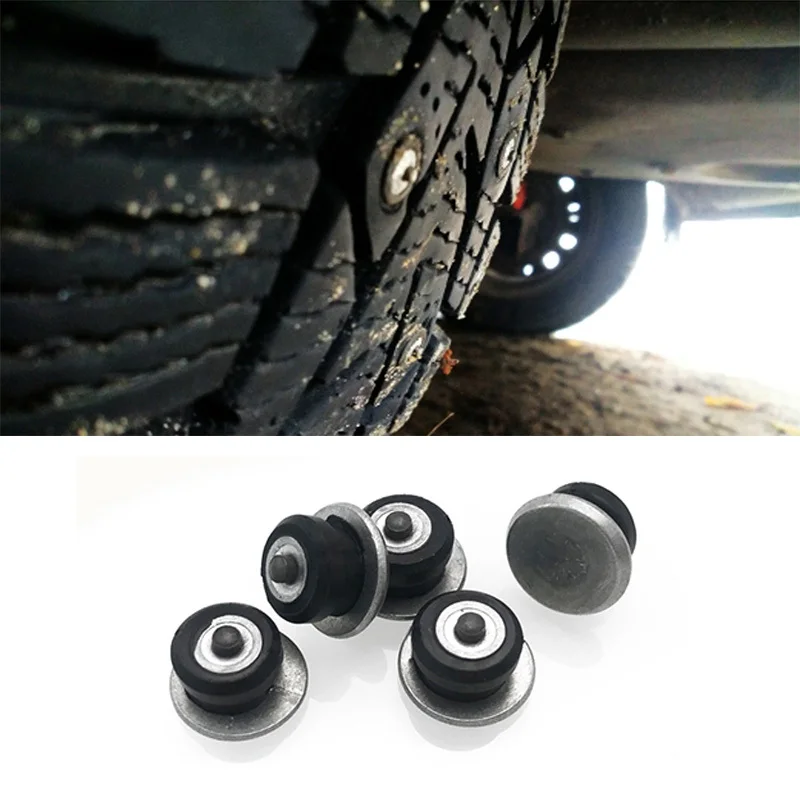
Adding weight to the bike is always a solution with both chains and studs if you need even better traction. But for obvious reasons, dragging along a couple of sandbags is less desirable for racing or trail riding purposes.
Winner: Studs
So we’ve established that studs work well on ice. But for studs, the fun stops here. With just a small layer of snow on top of the ice, they will no longer be able to dig into the ice, and the tires will start slipping.
It’s worth noting that the purpose of tire studs is often misunderstood; they are only meant for ice and nothing else. On snow, they have little to no effect. On super packed hard snow, the longer studs will work to some degree, but not by much.
Chains work great in moderate depths of snow, but they will dig in and leave you high centered on the belly pan when snow depths get extensive.
Your best chance with wheels in bottomless snow is getting a set of tires with massive paddle-shaped lugs and applying full throttle to increase wheel speed. This strategy works better in these conditions than any average tire with tire chains. You cannot achieve the required wheel speed when using chains.
This strategy works better in these conditions than any average tire with tire chains. You cannot achieve the required wheel speed when using chains.
Again, we’re talking about playing in deep snow here, not utility work in moderate amounts of compact snow. For the latter, chains are much better, only beaten by tracks.
Those who want to utilize tire speed to get traction when playing in the snow can install studs to keep the ride manageable when riding in on icy surfaces. This will reduce the chance of sliding down a snowy hill or spinning off the road.
When small enough studs are used, some even like leaving them in all year round.
Winner: Chains
Related: How to Install ATV Tire Chains (Diamond and Ladder Style)
Whenever riding on surfaces with no ice or snow on them, you will find that both studs and chains will reduce your grip compared to running with straight ATV tires.
The chains are so thick that it’s mostly metal that touches the ground and not the tire’s rubber.
Metal is hard, smooth, and needs a soft surface; it can dig into to be effective. When you ride on hard surfaces, you will only slide around while damaging the surface you are riding on and wearing your chains.
Studs can be a bit better as long as you don’t install studs that are too long. This will allow some of the rubber to contact the surface still, making them the better option of the two when riding on hard surfaces.
Winner: Studs
Studs will not wear your bike, but they will tie up a set of tires. Some choose to remove all of the studs when spring comes, leaving a scarred tire.
In practical use, this doesn’t matter much, but the cuts made by aggressively threaded studs may increase the chance of tire lugs coming loose when riding in the summer.
Chains will also wear your tires to some degree because they are more rigid than rubber. But the real damage is caused when they come loose, break, or when the chains are installed less snug than they should. A sloppy chain-link cathing your brake line will rip tear it open instantly.
But the real damage is caused when they come loose, break, or when the chains are installed less snug than they should. A sloppy chain-link cathing your brake line will rip tear it open instantly.
When the chains wear too thin and start breaking, they may cause quite a bit of damage to the bike before you manage to stop. A piece of a loose chain may damage or even rip off your plastic fenders.
It’s best to replace the chains with new ones when you start seeing several links where only 1/4 of the original metal thickness is left. On many ATVs, you will run into problems with chain catching when installed on a stock machine. The rear wheels are usually less troublesome, but turning the front wheels makes them more exposed.
First and foremost, you need to make sure the chains are installed tight with no slack. The easiest way to achieve this is by deflating the tires when you install the chains.
When you put air back into the tires, they will expand, taking up any slack in the chains.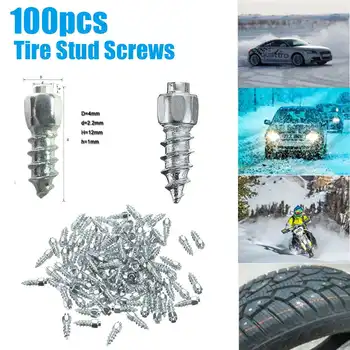
Next, you need to fasten all loose ends of chain. I like using steel shackles of the same quality as the chains. If this is not enough to keep the bike’s chains clear, you are left with installing wheel spacers. These are aluminum plates or special spacer bolts that bolts between the bike’s wheel hub and tire, moving the tire outwards.
I use 2″ spacers on all four wheels on my bike but could get by with 1 1/2 inch spacers only on the front wheels.
Another scenario when you risk damaging your bike by running chains is when the tires are spinning, then all of a sudden, they catch and regain full traction. This puts a lot of stress on the quad’s CV joints, and as most ATV owners will learn at some point, these things are not indestructible.
Winner: Studs
Chains can be installed and removed in a matter of minutes. It may take a bit longer the first couple of times, but it’s a relatively fast and easy procedure when you get the hang of it.
With studs, this takes a much longer time, no matter how much you practice.
The studs are installed one-by-one, using a drill. The process is quite time-consuming.Studs are made for ice only and will wear down if you use them on harder surfaces.
This is not ideal for ATVs that are often used on a wide variety of surfaces. Not many ATV owners will ride exclusively on ice.
Chains can be used on snow, ice, slush, gravel, and even on hard surfaces if you ride slow.
Winner: Chains
Studs with proper threads will handle almost any speed. This ability is what makes them so great for ice racing. Get threads as big/deep as your lugs allow.
Chains, however, do not handle higher speeds very well. They weigh quite a bit, and the momentum of high speed may have them disintegrate. Anything above 5-10 mph involves significant risk.
The force of a broken link breaking loose from the tire at speeds above 20mph will send it straight through your plastic fenders.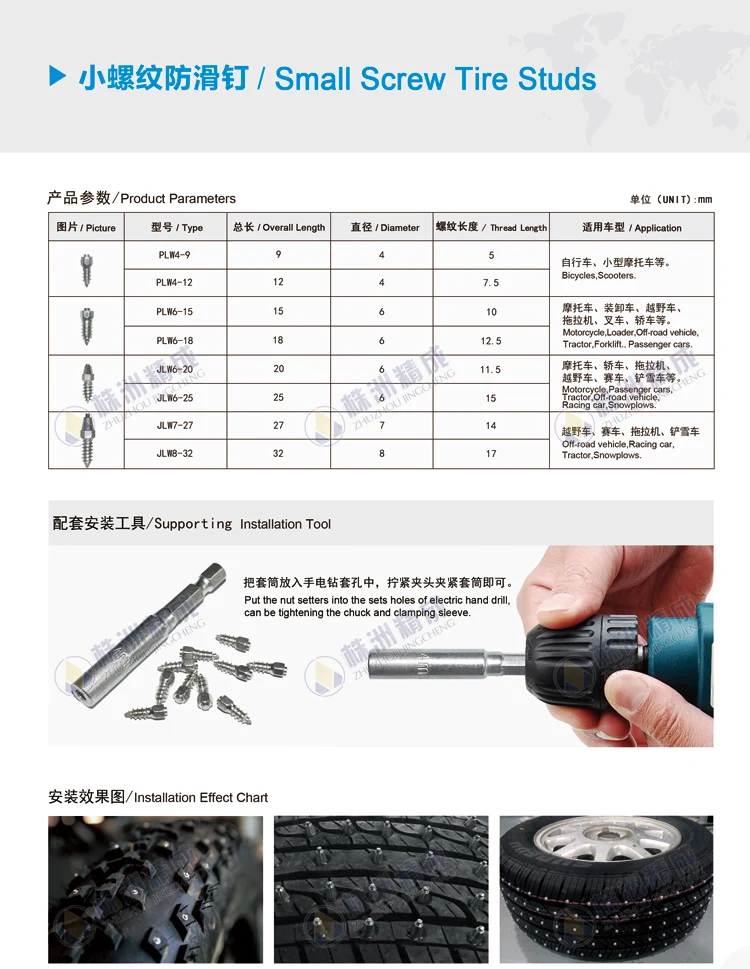 If the piece then proceeds to hit you, it may inflict severe injury.
If the piece then proceeds to hit you, it may inflict severe injury.
Some claim that a new set of chains can handle higher speeds, but you will face balance issues due to the chains losing their shape even if they do not break.
Winner: Studs
Both chains and studs will wear fast if you use them on hard surfaces like concrete or asphalt. Riding at higher speeds makes it even worse.
Ideally, it would be best if you did not have to ride on hard surfaces at all when you have chains on. Just one season with regular rides on asphalt may be enough to wear them down completely.
However, if you only ride in the snow, a good set of quality chains may last you a lifetime if you repair broken links and don’t misuse them too badly.
Some use ordinary hex metal plate screws as studs. This is cheap and will work fine if you ride only on ice. But any riding on asphalt or concrete will soon wear the studs down so that they lose almost all grip.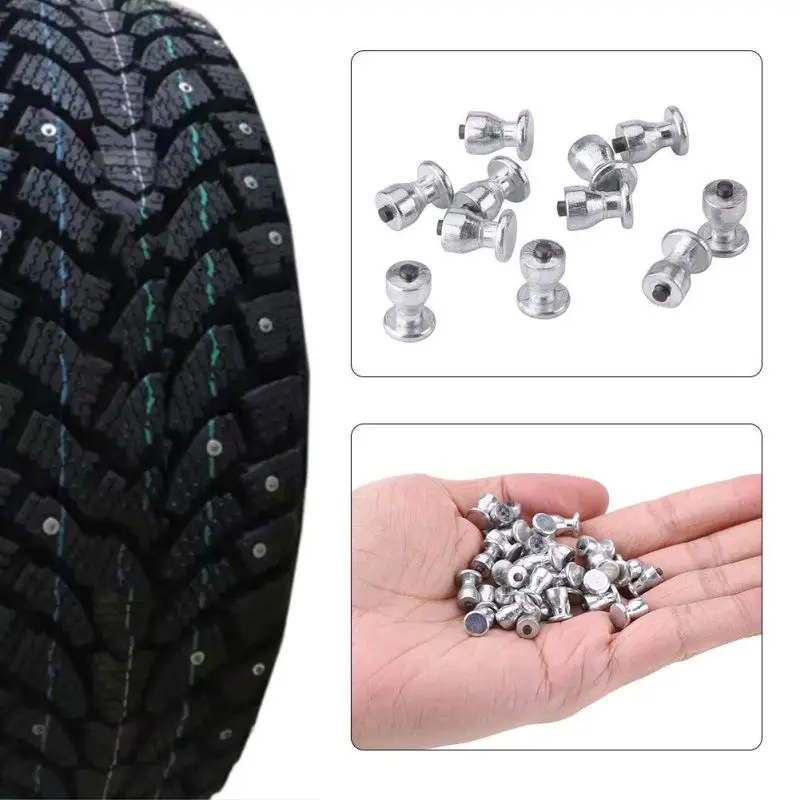
This is why purpose-made studs have carbide tips that will last a lot longer before they wear down. They are a bit more expensive than ordinary screws but will last a lot longer.
The purpose-made studs also have much more aggressive threads, so they will not come loose as quickly as the screws. Regardless of what style you choose, expect that a stud comes loose now and then. Luckily it is fast and cheap to add more studs when you need to.
I prefer the “ice auger” style of threads as these can take a beating without coming loose.
These threads can handle a beating before coming loose.Winner(s):
Chains are not exactly known for improving ride comfort.
Diamond-shaped chains will, however, rattle your teeth a lot less than the basic 2-link V-bar chains.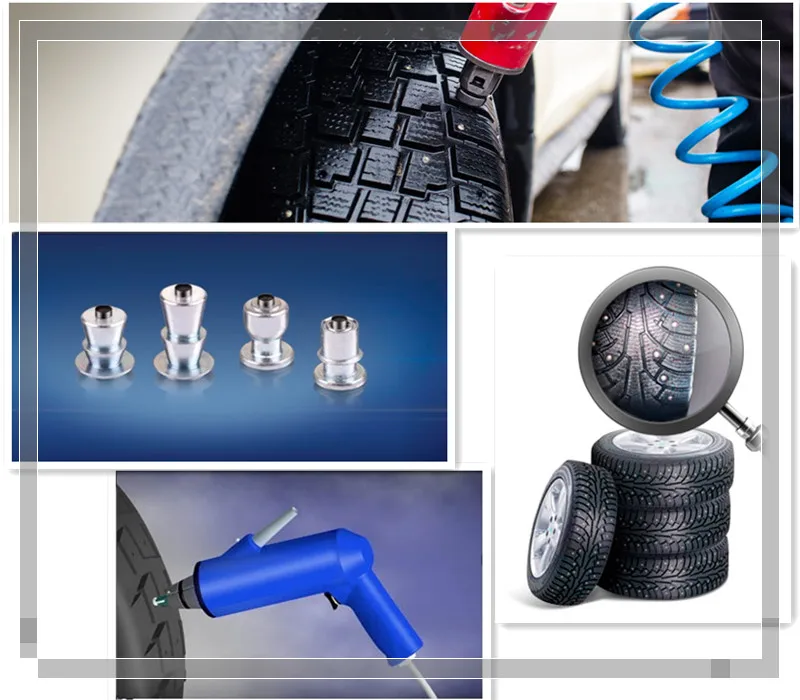
As long as speeds are kept low, you should have no issues. I call a tie when it comes to riding comfort as both chains and studs are plenty comfortable for their intended use.
What if neither chains or standard tirestuds meet your need?
Some riders prefer to sacrifice a set of tires and install beefier “studs” using 3/8 stove bolts that go straight through the tire with a washer on each side.
You can decide how long the bolt should be according to your need. Some leaves as much as 1 inch of each bolt sticking out.
Compared to running chains, this DIY setup has the advantage of no loose chain-ends flying around. You can ride faster with less risk of damage, as long as the bolts are fastened securely.
Skipping chains and studs altogether is a viable option for many riders that don’t like some of the disadvantages of having them.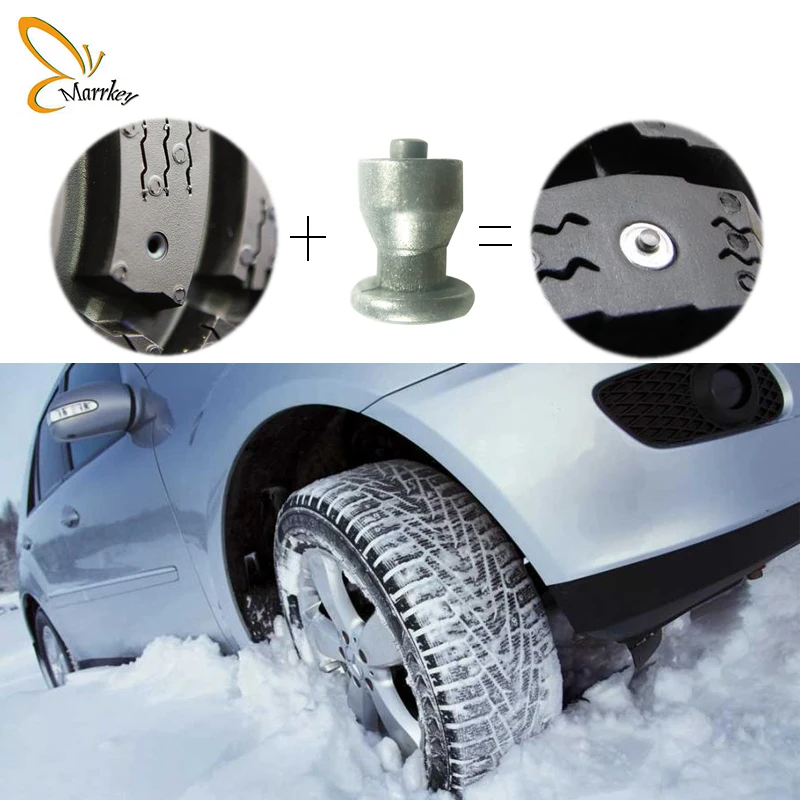 For riding on packed snow, most ATV tires will deliver decent traction.
For riding on packed snow, most ATV tires will deliver decent traction.
Especially for those that only need to plow their relatively flat driveway a few times each year and don’t want to scratch it, you will likely get by.
Get a set of good quality tires with a soft rubber blend like the IPT Mud Lites, and strap on a couple of sandbags, and you should be able to handle quite a bit of snow before having issues.
Taking several small passes with the plow may also be enough so that you don’t need to risk scratching your driveway.
If you don’t like the idea of studding your summer tires, it may be worth looking into the ITP TundraCross Studded ATV Tires. These come pre-studded from the factory and features a tread pattern and rubber blend that suits winter use well.
A good option that some prefer is installing chains on the back tires and studs upfront. To some degree, this will give you the best of both worlds, with less risk of damaging the bike.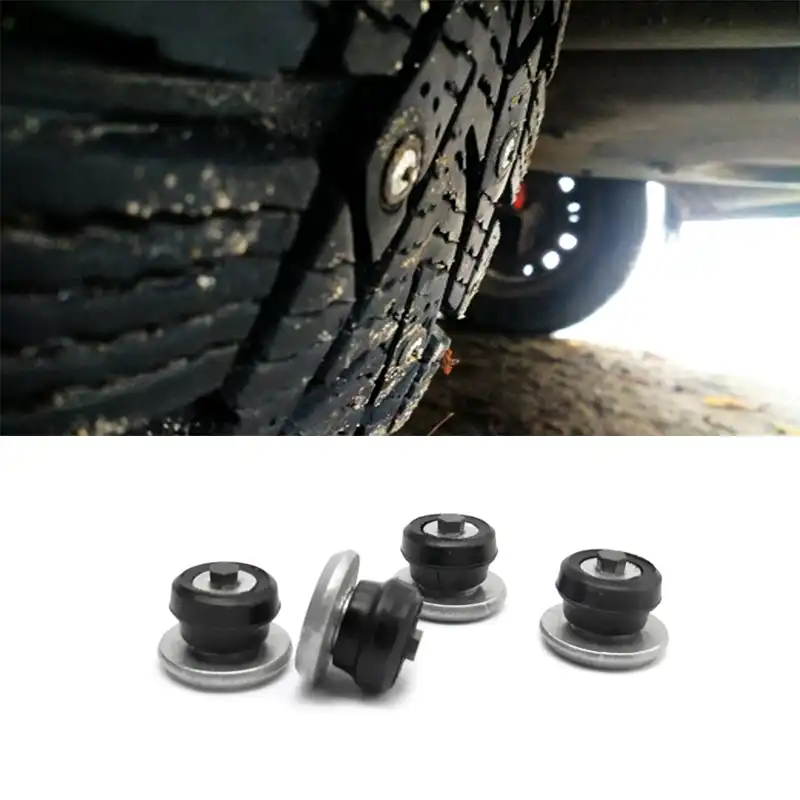
For moderate to deep snow, nothing can beat a set of good ATV tracks. If you expect a lot of deep snow riding, you might as well skip straight to what’s most likely to satisfy your needs.
Yes, you can put studs in almost all ATV tires. They are installed in the tire lugs. Make sure you get the right type and length of studs.
Yes, most quality studs can be removed using the same tool that’s used to install them.
For all-purpose use in areas with a good solid winter, a set of ATV tire chains is definitely worth it. It’s better for those who only get the occasional snowfall to get a set of quality ATV winter tires.
ATV tire studs are screwed right into the tire’s lugs to give a better grip on ice. They do not work well on snow. A carbide tip on each stud reduces wear.
The number of studs you should use depends on how many lugs the tire has and the expected usage. One stud pr lug is a good starting point. With more oversized lugs, one can consider installing two studs per lug.
One stud pr lug is a good starting point. With more oversized lugs, one can consider installing two studs per lug.
Very few manufacturers produce dedicated snow tires for ATVs. They do give extra traction on snow, but they are expensive. A mud tire with a soft rubber compound will likely do just as well of a job for most riders.
by admin | Feb 21, 2019 | ag tires, ATV Tires, backhoe tires, construction tires, excavator tires, farm tires, forklift tires, garden tractor tires, loader tires, RTV Tires, Side by Side Tires, skid steer tires, UTV Tires
Tire studs, also known as ice studs or tire ice screws, can be used in tires or in rubber tracks when you are operating your equipment in extreme environments such as snow and ice. These removable screw in studs to will convert your tires to winter tires.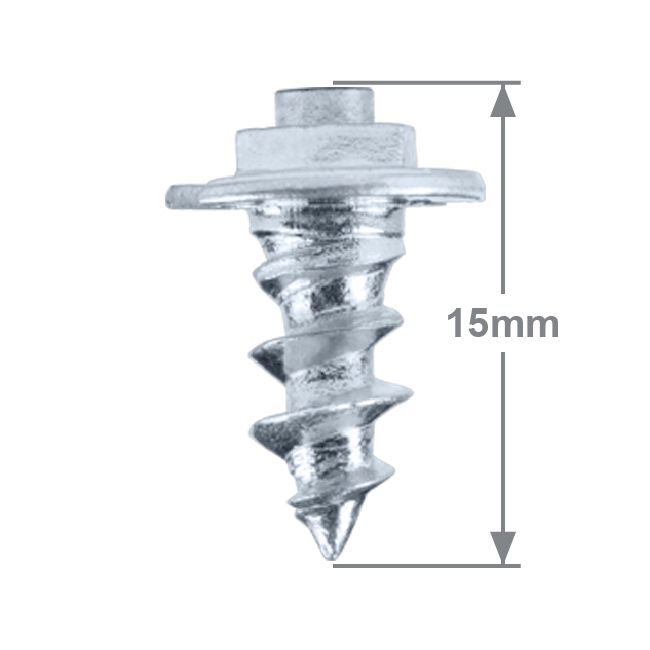 They are a particularly good alternative when you do not have enough clearance on your equipment for tire chains. Ice studs can be removed and reused year after year. Most screw in tire studs are used on tractors, backhoes, forklift, ATV and equipment with rubber tracks. We are often asked if they will work on snowblowers? Many snowblowers do not have enough clearance for tire chains but the treads have cut sipes that would prevent being able to screw in a tire stud.
They are a particularly good alternative when you do not have enough clearance on your equipment for tire chains. Ice studs can be removed and reused year after year. Most screw in tire studs are used on tractors, backhoes, forklift, ATV and equipment with rubber tracks. We are often asked if they will work on snowblowers? Many snowblowers do not have enough clearance for tire chains but the treads have cut sipes that would prevent being able to screw in a tire stud.
Our customers have been extremely pleased with the added traction ice studs provide for equipment with rubber tracks.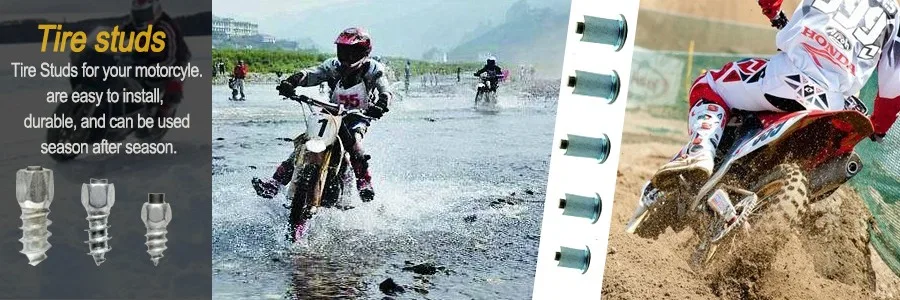 Dave was having trouble maneuvering his skid steer on hard packed snow and ice. Here is what Dave had to say about using tire studs in his rubber tracks:
Dave was having trouble maneuvering his skid steer on hard packed snow and ice. Here is what Dave had to say about using tire studs in his rubber tracks:
“Unbelievable. It’s like night and day…like having new tracks on my machine. I am in awe of the difference. Before I had to slow my machine or crawl. Now I can go full speed!”
Dave L.
Hardwick, MA
Tire stud size is determined by the tread lug depth and also the screw size..Here are some general product guidelines for the ice studs we carry.
MaxiGrip HM-15 is used on smaller tractors, mid-sized ATV’s and small industrial vehicles with a tread depth of 14mm.
MaxiGrip HM-18 is used on small tractors, compact loaders, skid steers, fork trucks and larger ATV’s with a tread depth of at least 17mm.
MaxiGrip HM-25 is used on mid-sized tractors, compact loaders, backhoes, loaders and larger fork trucks with a minimum tread depth of 24mm.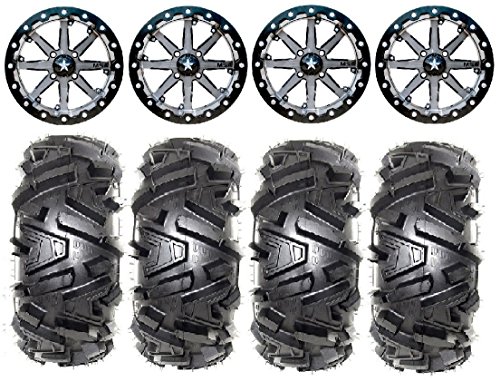
MaxiGrip HM-30 is used on loaders, backhoes, large tractors, dumpers and other heavy machinery with a tread depth at least 29mm.
As with all the product we sell, our experts are available by live chat, email or phone support to help you determine is tire studs are a good option for you.
The video below shows how easy it is to install and remove tire studs.
Truck tires are harder to stud than car tires. The same can be said about the tire sizes 10.00R20 or 12.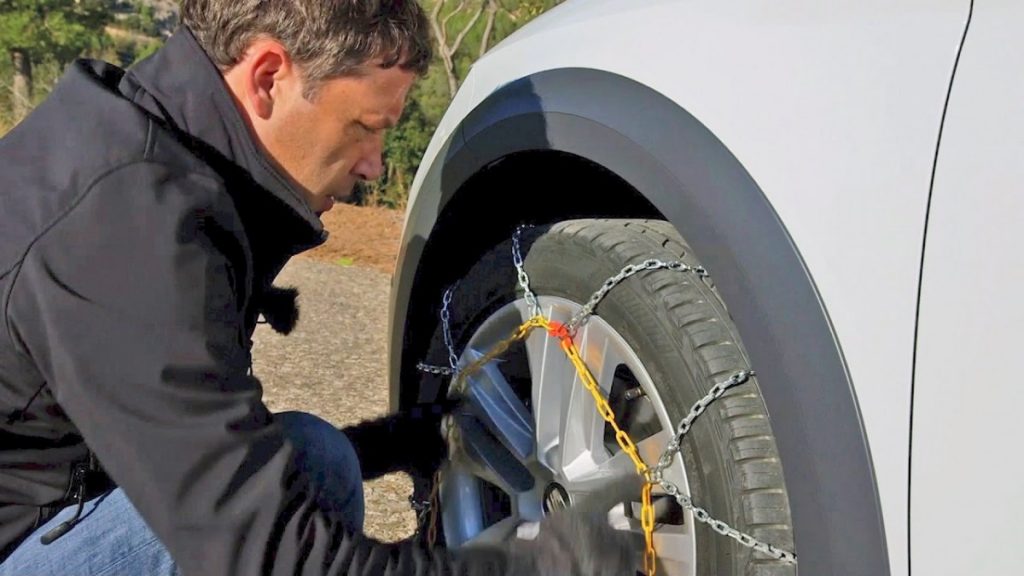 00R20. And then what about tires for special equipment 14.00R20? We have proven in practice that this is a solvable problem.
00R20. And then what about tires for special equipment 14.00R20? We have proven in practice that this is a solvable problem.
The bigger the wheel, the more difficult it is to stud
Probably all motorsport fans (and not only them) have heard about the KAMAZ-master team. Her achievements in the Dakar rally are the pride of the country and an indicator of the level of development of the domestic auto industry.
The KAMAZ-master team won the Dakar rally 15 times and the Silk Way rally 7 times.
In 2013, the team contacted our company. We were required to stud the tires of a KamAZ truck specially prepared for winter performances and training. The standard solutions that we used for smaller wheels could not give the desired result in this situation.
The result is a new technology and studs that have proven their worth on extra-large tyres. They are able to withstand huge loads. Now they are successfully used even for career special equipment.
By 2015, we have developed a new cleat technology. Improved spikes were used already in 2017.
This is what a stud looks like installed in a 14.00R20 Continental HCS tire
Any truck studs initially differ from passenger studs in weight and dimensions. Previously, we have used products with the following parameters:
| Parameter | Load spikes |
| Spike length, mm | 15–23 |
| Flange diameter, mm | 11–15 |
| Carbide insert diameter, mm | 3. |
| Weight, g | 4.0-16.5 |
For the 14.00R20 Continental HCS, this was not enough given the high loads. We started to create a new type of spikes.
The cases were turned from a steel bar with a diameter of 16 mm on a turret lathe. Then the final product with a 5.5 mm carbide insert was assembled and completely covered with a protective zinc layer. As a result, we received three-flange cargo spikes in two sizes: 16-29-3 and 16-34-3.
The studs on the far right are designed by us for the KAMAZ-master team. Differences from all other Tecom truck studs are visible to the naked eye
Studded tires were tested at the training base of the KAMAZ-master team. The tire test in combat conditions was carried out by the famous pilot Eduard Nikolaev.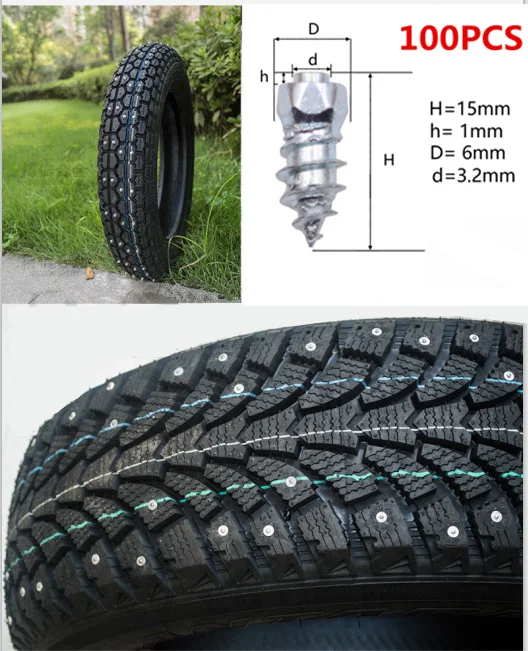 The test can be seen in the video below:
The test can be seen in the video below:
Eduard Nikolaev has an impressive list of sporting achievements. In the Dakar Rally, as a pilot, he took third place twice, second once and first three times. In addition, Eduard Nikolaev has repeatedly won prizes in the Great Kalmykia, Khazar Steppes, Silk Way, Gold of the Kagan, Simbirsk Trakt rallies and the Russian rally-raid championship.
Of course, it is difficult to set an unsolvable task for a master of this level, but in this case, difficult weather conditions added spice. Testing has shown that a car with a gross weight of more than 10 tons at a speed of more than 100 km / h remains fully controllable when driving on ice. In many ways, this is the merit of an experienced pilot and Tecom spikes.
Deep furrows in the ice surface show the efficient operation of the studs in a controlled skid
We are really proud of this collaboration. It turned out to be useful for both parties: the pilots of the KAMAZ-master team got the opportunity to improve their professional skills by honing their skills in winter, on ice and in controlled skidding, and we were able to create a new line of studs and develop a technology for their installation. Now such spikes are successfully used for large special equipment.
Now such spikes are successfully used for large special equipment.
The behavior of a heavy machine on studded tires in difficult weather conditions can be seen in the video below:
A lot of work has been done. Now we have every reason to believe that if in the future there will be a winter analogue of the Dakar rally, our team will occupy a leading position here as well. It is this result that the technical refinement of the wheels in the form of installing spikes, multiplied by the skill of the pilots, should provide.
Disputes about which tires to choose flare up with renewed vigor every year. Many argue that studded tires are the choice of amateurs and emergency workers. However, the AvtoVzglyad portal is ready to argue with this.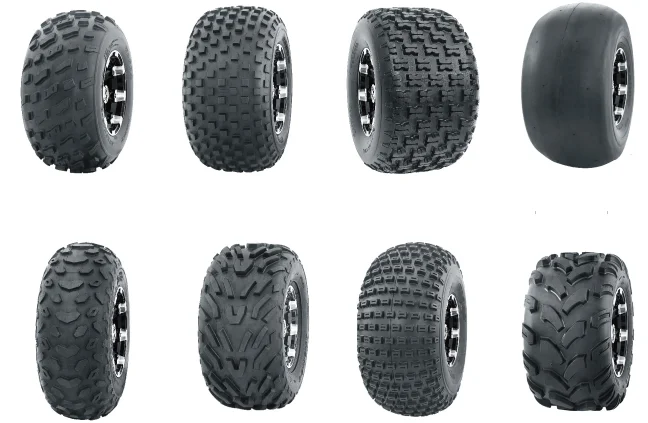 Moreover: in some cases, "spike" is the only right choice for operation both in the city and beyond.
Moreover: in some cases, "spike" is the only right choice for operation both in the city and beyond.
Viktor Vasiliev
The material posted on the AvtoVzglyad portal about the shortcomings of studded tires received a strong response. Spikes, they say, do more harm than help. Is it really? Let's figure it out.
This is one of the main advantages of studded tires. On loose or compressed snow, spikes go better than Velcro. The point here is not the presence of the spikes themselves, but the tread pattern. For spikes, it is directional in the vast majority of models, while for Velcro it is asymmetric. There are many deep grooves in the directional pattern (and they are noticeably deeper than those of friction tires), through which the snow-water porridge is removed from the contact patch like a pump. Thus, the car on the "thorns" behaves more confidently on a snowy road.
Do not forget that not only the tread works on the tire, but also the rubber compound.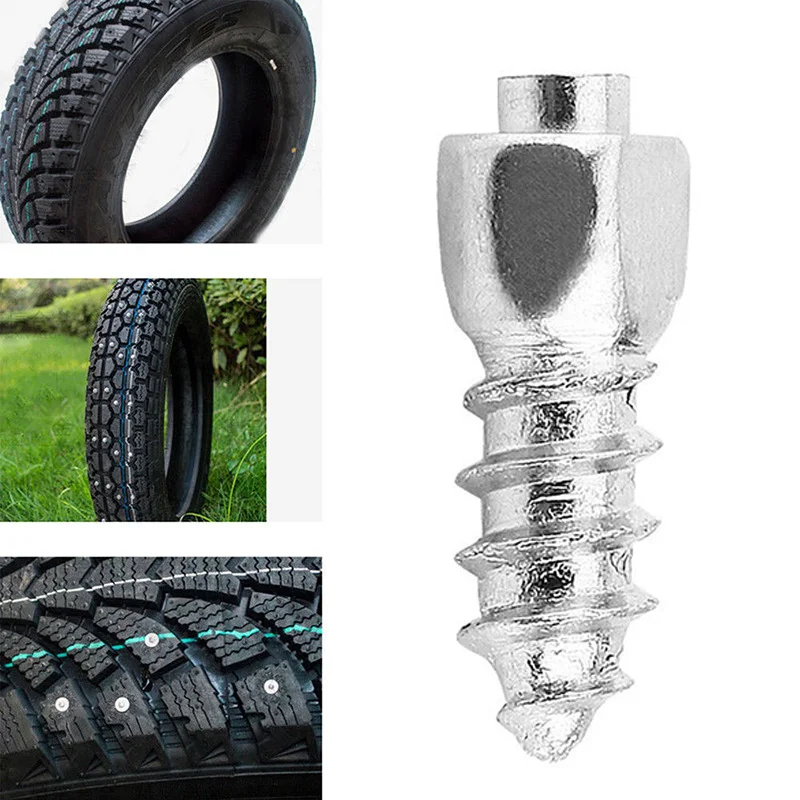 The compound of non-studded tires is made softer so that they cling better to snow and ice. They don't have spikes. And the softer the rubber, the faster it wears out. Therefore, with the same operation, "studs" will live longer.
The compound of non-studded tires is made softer so that they cling better to snow and ice. They don't have spikes. And the softer the rubber, the faster it wears out. Therefore, with the same operation, "studs" will live longer.
Photo: Driving Art
There is an opinion that spikes on asphalt prevent the tread from adhering tightly to the surface. Thus, the car becomes less stable. This is not entirely true. The thing is, technology never stands still. Many companies have solutions that allow the studs to keep and make the car's behavior more stable, especially when braking. Let's say Nokian has a spike that is "planted" on the so-called "cushion". On the pavement, this “pillow” seems to be springy and the spike slightly presses into the tire. Thus, the load on it is reduced, and the tread firmly adheres to the surface. Well, on ice, the hardness of which is lower than that of asphalt, the spike works as it should - it "bites" into the ice.
Among other solutions, we note Dunlop SP Winter ICE 03 rubber. The studs of these tires have a beveled carbide core. It also reduces the load on the spike on the pavement, because it is more difficult to “tear out” such spikes.
In my deep conviction, this is complete nonsense. A tire from which all the spikes have flown out is absolutely safe. She will have worse braking on ice, but on dry pavement the grip will increase. Let's not forget that the tread and rubber compound continue to work, which means that such a tire will, as before, be stable on a snowy road. And on wet pavement, it will work just fine. The tread pattern with deep grooves and a large number of sipes provide excellent traction.
121355
Even if the tire has lost all the spikes, the tread and rubber compound continue to work. Say, after a rain it froze, and a thin ice crust formed on the road. She's almost invisible. This is where the spikes will save you, while on Velcro you can fly into a ditch even at 40 km / h.